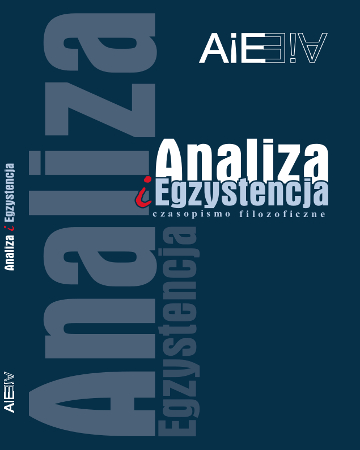
ISSN: 1734-9923
eISSN: 2300-7621
OAI
DOI: 10.18276/aie.2019.45-01





Issue archive /
45 (2019)
O fundamentach dla metafizycznego fundowania
(On the Grounds for Metaphysical Grounding)
| Authors: |
Karol
Lenart

Uniwersytet Jagielloński, Wydział Filozoficzny, Instytut Filozofii |
| Keywords: | grounding essence ground relation facts superinternality regress |
| Data publikacji całości: | 2019 |
| Page range: | 20 (5-24) |
Abstract
In this article I defend a meta-grounding thesis according to which facts that express metaphysical grounding are grounded (are not fundamental). First, I claim that it is justified to accept the meta-grounding thesis. In the next step I discuss two theories that explain how metaphysical grounding is grounded: a theory that involves a notion of superinternal relation and a theory that uses a notion of essences of facts. I argue that later theory is preferable over the former one.
Download file
Article file
Bibliography
| 1. | Adams, R. M. (1979). Primitive thisness and primitive identity. The Journal of Philosophy, 76(1), 5-26. |
| 2. | Bennett, K. (2011). By our bootstraps. Philosophical Perspectives, 25(1), 27-41. |
| 3. | Bennett, K. (2017). Making things up. Oxford University Press. |
| 4. | Cameron, R. (2008). Turtles all the way down: Regress, priority and fundamentality. The Philosophical Quarterly, 58(230), 1-14. |
| 5. | Dasgupta, S. (2014a). The possibility of physicalism. The Journal of Philosophy, 111(9/10), 557-592. |
| 6. | Dasgupta, S. (2014b). On the Plurality of Grounds. Philosopher's Imprint, 14(20), 1-28. |
| 7. | deRosset, L. (2013). Grounding explanations. Philosopher's Imprint, 13(7), 1-26. |
| 8. | Ellis, B. (2001). Scientific essentialism. Cambridge University Press. |
| 9. | Fine, K. (2012). Guide to ground. W: F. Correia, B. Schnieder (red.), Metaphysical grounding: Understanding the structure of reality (s. 37-80). Cambridge University Press. |
| 10. | Jago, M. (2017), From nature to grounding. W: R Bliss, G. Priest (red.), Reality and its Structure: Essays in Fundamentality (s. 199-216). Oxford University Press. |
| 11. | Lowe, E. J. (2008). Two notions of being: Entity and essence. Royal Institute of Philosophy Supplements, 62, 23-48. |
| 12. | Mackie, P. (2006). How things might have been: Individuals, kinds, and essential properties. Oxford University Press. |
| 13. | Oderberg, D. S. (2007). Real essentialism. Routledge. |
| 14. | Plantinga, A. (1978). The nature of necessity. Oxford University Press. |
| 15. | Rabin, G. O., Rabern, B. (2016). Well founding grounding grounding. Journal of Philosophical Logic, 45(4), 349-379. |
| 16. | Rosen, G. (2010). Metaphysical dependence: Grounding and reduction. W: B. Hale, A. Hoffmann (red.), Modality: Metaphysics, logic, and epistemology (s. 109-136). Oxford: Oxford University Press. |
| 17. | Schaffer, J. (2009). On What Grounds What. W: D. Chalmers, D. Manley, R. Wassermann (red.), Metametaphysics: new essays on the foundations of ontology (s. 347-384). Oxford University Press. |
| 18. | Schaffer, J. (2010). The internal relatedness of all things. Mind, 119(474), 341-376. |
| 19. | Sider, T. (2013). Writing the Book of the World. OUP Oxford. |
| 20. | Thompson, N. (2016). Metaphysical interdependence. W: M. Jago (red.), Reality Making (s. 39-56). Oxford University Press. |
| 21. | Ujvári, M. (2013). Individual Essence: gibt es solche? Metaphysica, 14(1), 17-30. |
| 22. | Wieland, J. W. (2013). Infinite regress arguments. Acta Analytica, 28(1), 95-109. |
| 23. | Wiggins, D. (2001). Sameness and substance renewed. Cambridge University Press. |
| 24. | Wildman, N. (2011). Essential properties: analysis and extension. PhD diss. University of Cambridge. |